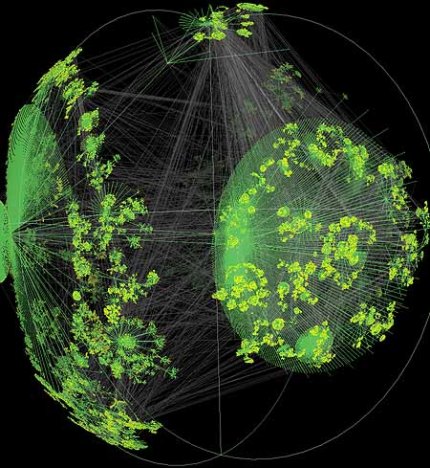I have delayed writing my reflections on a research tip to the Lake District for some time. In 2015, as part of my undergraduate degree, we visited the Lake District for five days. We conducted a research project in the village-town of Grasmere. My reflections were not so much related to the obvious commodification and re-appropriation of the Wordsworth legacy in “selling the place”[1]. There is not one space (place) within the Capitalist world interior that is not “sold”: everywhere is up for sale to the highest bidder.

My reflections are but impressions, as for most contemporary Geography analysis: most Geographic analysis is an analysis of impressions. Empirical impressions become something more by some form of theoretical supplementation. It was later in 2014 (to be discovered by me only in the latter half of 2015) that Rem Koolhaas would assert that faster change is happening in the countryside than in the city[2]. In his essay, Koolhaas identifies a key feature of rural change that is both paradoxical and persistent: the village that de-populates while growing and multiplying at the same time.
What he calls “thinning”, ‘an increase in the area covered alongside a diminishing intensity on use’[3], is where I will begin my reflections on Grasmere. De-population or even a movement towards counter-populating (increasing house pricing as to dissuade urbanites from moving to the country) may be the most significant element of a ‘specific regime’[4] that as Rem acknowledges ‘cannot be changed’[5] .
Here it should be asked for what reasons can a regime not be changed or if by ‘cannot’ he in fact means should not. His interest in preserving vernacular and localized styles (as his essay from 2014 indicates) may lead to this conclusion. In his essay, he talks about migration to the countryside (South East Asians migrating to the Swiss and Italian countryside). In Grasmere, there was an interesting dynamic between a Dove Cottage[6] tour guide and the owners of the Dove Cottage café.

The tour guide was commenting on the fact that eastern European immigrants were moving into the surrounding area, while being both lazy and taking unskilled jobs (the ever persistent case of the “Schrödinger’s immigrant”). The dove cottage café owners were of Romanian origin. The café owners were commenting on racism and hostility to their presence locally. The café is around a three minute walk from Dove Cottage.
What is interesting about Koolhaas’s short and illustrated comment on South East Asian’s occupying countryside work, migrating to the European countryside is that, at least in the British context, it disturbs the imagined and idyllic fabric of the country[7]. The British country is sacred, phantasmal: there is a strong genealogical link to the countryside. The presence of ethnicity disturbs this idyllic and phantasmagorical image. The only difference is that South East Asian’s have been in Britain for over 50 years. The major disruption in the contemporary imagination seems to be the “beast from the east” (the “Pole” for instance).
Koolhaas also sees this rural ‘thinning’ as a ‘kind of modernity’ not yet encountered[8]. It is quite evident that the Modernist avant-garde (Le Corbusier for instance)[9] never considered the countryside of any relevance. What Koolhaas describes as a ‘cliché’[10] (everybody living in cities) was the apex of the Modernist project. Postmodernism continued this particular project despite its variations in design.
Coming back to what will be one of the persistent questions of the 21st century (the ‘migration question’); it is clear that the countryside is not free from the movement of bodies. The city has for a long time been an antagonistic agglomeration of differing politico-cultural bodies (the 21st megacity is an antagonistic hyper-organism of antagonistic organs). Rural organs maybe more dislocated than their urban counterparts, but they are still present.
It would appear that Koolhaas is in concord with Sloterdijk’s pronouncement that this century is the conservative century[11]. They both seem to acknowledge the elastic nature of this conservativism: this preservation of tradition and heritage is not static, immutable. It is stretchy and inclusive despite its internal limits, the possibility of snapping while bending. It is also not anti-progressive, in the sense that conservation and preservation can be translated into a politically progressive project.
The entanglement between “authentic-generation” and “inauthentic-migration” is the starting point of the genealogical/anti-genealogical struggle[12]. The struggle for the sacred however is not new (if we can say that the ‘British soil’ is a sacred site for agrarian-nationalists). The indifference of Global Capital towards this genealogical battle is yet to be decided. The Romanian right of property is totally indifferent to the “5th generation local” Brit (at least to the degree that the British right of property is totally indifferent to the “5th generation local” African).
Another interesting observation of the British countryside is the average age of its population (if the visitors to Grasmere are even representatives of the local population can be debated). There was barley any youth; there was a significant amount of elderly citizens. In short, the production of a “6th generation local” should be called into question. The “2nd generation locals” first language may perhaps be Romanian and not English. Here Grasmere has similarities to 19th century America.
Koolhaas makes some interesting observations of the ‘appearance’ of the countryside settlement:
‘What we found was a thriving prototype of the non-agricultural countryside – a new genre of land use called “the intermediate” – a well-manicured place where surface appearances bear almost no relation to what is actually happening on the land and in the buildings’[13].
The appearance of Grasmere seemed to be all that was going on in Grasmere. Do people live here, if so, why? What happens when nothing goes on in a settlement? But there is never a nothing. Tourism was alive and well: hotels maybe full and consumers’ pockets may have been emptied. But if there was some indigenous population, where was it and what did it look like? The tour guide ironically did not even live in Grasmere itself.
I was ‘preoccupied’ (and still am) by the expansion of the urban towards the rural, as well as the rural migration projects to the urban[14]. But it seems that there may be an ‘alternative modernity’, or a different project going on in the European countryside. Not everything is urban and the urban is not moving everywhere in the Capitalist interior.
When I was asking individuals “why are you here today?” as part of my research project, I should of be been asking “would you live here?” or “why would or wouldn’t you live here?” Why was it a semi-permanent place to visit? Do those who hold the view that the “British countryside is sacred” even live or come from the countryside?
Koolhaas may be right in saying that the countryside is a land ‘in-between’[15], contested and caught in all-encompassing development projects (it is clear that the countryside was not considered interesting enough to be incorporated into Modernist projects).
It is also surprising to meet the Gibson’s and K Dick’s in the country: the automatization and digitation of agricultural production. ‘The farmer is like us – a flex worker, operating on a laptop from any possible location’[16]. Even credit card machines and card readers in Grasmere appear slightly interesting when abstracted from the normality of the computer or smart phone screen. Every shop in Grasmere seemed to accept card. I even bought a book on Wordsworth’s poetry through my visa.

The sky above may not be the ‘color of television, tuned to a dead channel’[17], but the satellites are ever present, the relaying of digital messages is as persistent as Gibson or McLuhan could imagine. Re-affirming the penetration of the country by the cyber, I checked Google Earth to see the layout of the village-town before writing my research paper (GIS generally is evidence of this cyber-penetration into areas of the known and unknown).
The country is a void where ‘new processes are taking place and new experiments and developments are being made’[18]. Digitisation goes in hand with marketization. However, the market has never been “outside” of the country, so to speak. But the new forms of capitalist modernisation (automation, the introduction of the digital into labour-practices, etc.) are perhaps something not yet seen in the countryside. The poeticism and arbitrariness once associated with the countryside, according to Koolhaas, can now be reserved for the cities[19].
The Tourist visiting the rural (and perhaps the rural migrant to the city) is the only subject who may see a poetic side to the countryside. The digitisation of farming, of the tree to be cut, of the cow to be milked, reduces the object in question to a statistic, a number part of a mathematical equation. Hegelian Geist is in motion wherever there is computation[20], spirit is moving towards artificialisation. As Sloterdijk states, progress is not to be confused with human progress[21].


This does not mean that there is no poetic side to the country or to place, but it does mean that the poetic is not with us a priori, as a given. It was interesting to see my tutor make a classmate read out a Wordsworth poem next to his grave. I could only think of Necromancy (if by Necromancy we mean the practice of communicating with the dead, re-animation of the dead or performing rituals for and towards the dead). The implications for those who see existence as being-towards-death cannot be discussed here.
What I will say is that this is an interesting re-localisation of death, in the sense that a general spatialisation of death can occur in reading the writing of the dead[22]. Media can transport the dead into any space required through mimetics. However, the ritual performed graveside is a re-localisation Wordsworth[23]. The Tourist takes part in the re-localisation of the de-poeticised element of the country. In this sense are Tourists the avant-garde of cultural preservation? The Tourist also helps to accelerate the artificialisation of a given locality at the same time, what is one of the paradoxes (or contradictions) discussed by Koolhaas in his essay.
Two paragraphs in his essay stand out due to their provocative tone:
‘The countryside is now the frontline of transformation. A world formerly dictated by the seasons and the organisation of agriculture is now a toxic mix of genetic experiment, science, industrial nostalgia, seasonal immigration, territorial buying sprees, massive subsidies, incidental inhabitation, tax incentives, investment, political turmoil, in other words more volatile than the most accelerated city.
The countryside is an amalgamation of tendencies that are outside our overview and outside our awareness. Our current obsession with only the city is highly irresponsible because you cannot understand the city without understanding the countryside’.[24]
From these two paragraphs we can see that a) The countryside is the site of acceleration and is antagonistic in nature, over being the site of de-acceleration and harmony. b) Its population is more dynamic and transitionary that the city’s population, the cities stratification and segmentation is more ridged and static than the countries. c) To understand the logic of the urban, we need to understand the contradictory relationship of the country.
I am not sure if we can follow Koolhaas in stating that the country is ‘outside of our overview and outside our awareness’, especially not those who have been located within a university Geography department. We can however follow that the concepts and themes elaborated in relation to the city have not been elaborated and conceptualized in relation to the countryside to the same degree: the relation of cyberspace and techno-society to the countryside, eco-poetics and the state of the aesthetics in the age of ‘temporary immigration’ and mass tourism, etc.
In the comments section on the post ‘Rem Koolhaas and the New Frontline of Transformation’ (ArchDaily), a legitimate warning against incorporating the countryside into a general project can be seen:
‘Please super star architect, please please, please (as a person who lives in the country side) stick to destroying your cities via non-sensicle theoretical thinking and leave our country side ALONE’.[25]
I cannot but agree with this comment. Theorising about the countryside in the same way as the city can lead to disastrous results: repeating the failed projects of Modernism (and even Postmodernism) in the countryside would be total disaster[26]. However, some of these changes and projects are already taking place within the countryside and should be analysed and theorised.
The themes discussed in Koolhaas’s essay are already occurring, even in ways he did not discuss. It is clear that for instance, British countryside housing (especially second homes) is already causing issues for the indigenous population; agricultural production is already going through technological modernisations, etc. The open question is this one: what does the subjective position of the countryside citizen look like under Global Capitalism?
Notes
[1] What is called “Tourist Geographies” or “Leisure Geographies” are variations on the theme of selling a site, a place. Perhaps the resistance to this liberal democratisation of place could be found in Heidegger. Heidegger was the first spatial theorist with anti-tourist and anti-leisure inclinations. Heideggerian ‘Ort’ (place) is not without nostalgic and conservative connotations however.
[2] Koolhaas, R. 2014. Rem Koolhaas in the Country. http://www.iconeye.com/architecture/features/item/11031-rem-koolhaas-in-the-country
[3] Ibid.
[4] Koolhaas, R. 2013. OMA now preoccupied with “the countryside and preservation” says Rem Koolhaas. http://www.dezeen.com/2013/11/28/rem-koolhaas-countryside-preservation-movie-interview/. Counter-population is related to counter-urbanization, what has occurred in Cuba for some time.
[5] Ibid.
[6] The Home of William Wordsworth that is maintained as a museum and as a tourist attraction.
[7] Woods, M. 2010. Rural. Routledge, Oxon. Pp. 4-6
[8] Cf. Koolhas in the Country
[9] See Jencks, C. 1987. Modern Movements in Architecture. Penguin Books, London For a discussion of this Modernist project.
[10] Cf. “The Countryside and Preservation”
[11] Sloterdijk, P. 2014. Film for People – Peter Sloterdijk Interview. https://www.youtube.com/watch?v=mUrj0whdmxQ
[12] Cf. Sloterdijk Interview
[13] Cf. Koolhas in the Country
[14] This is most evident in third world industrialising and modernising nations like China and India, a good critical book on this topic is Davis, M. 2007. Planet of Slums. Verso, London.
[15] Cf. Koolhas in the Country
[16] Ibid.
[17] Gibson, W. 1995. Neuromancer. HarperCollins, London. pp. 4
[18] Cf. Koolhas in the Country
[19] Ibid.
[20] Negarestani, R. 2015. 04 Inhuman Symposium. https://www.youtube.com/watch?v=REG6qIQbQpQ. In his presentation, Negarestani links Hegel’s Geist (spirit) to Artificial General Intelligence and artificialisation.
[21] Cf. Sloterdijk Interview.
[22] For instance if I read Wordsworth poetry in my bathroom on my toilet, or I read an obituary online or in my local newspaper.
[23] If the story of Nietzsche breaking down and crying at seeing a dead cow, is this a localisation of death?
[24] Cf. Koolhas in the Country
[25] MacLeod, F. 2014. Rem Koolhas and the New Frontline of Transformation. http://www.archdaily.com/553770/rem-koolhaas-and-the-new-frontline-of-transformation
[26] Bijlmermeer would be a great example. Le Corbrusier designed several high-rise, honeycomb shaped apartment blocks for the middle class. The middle classes totally rejected the design and the area. It is now occupied my lower class migrants. See Bowden, H. 2013. Urban Renewal of Bijlmermeer: A qualitative study to evaluate the social problems within a post redevelopment area. Edge Hill University Dissertation; Shakur, T., Halsall, J. 2007. Global Cities, Regeneration and the Translocal Communities of Europe. GBER Vol 6. No. 1. Pp. 1-4. Shakur, T. 2014. Changing Dynamics of the cities, communities and spaces: Reconceptualising urban planning, design and architecture. GBER Vol 9, No. 1. Pp. 1-3